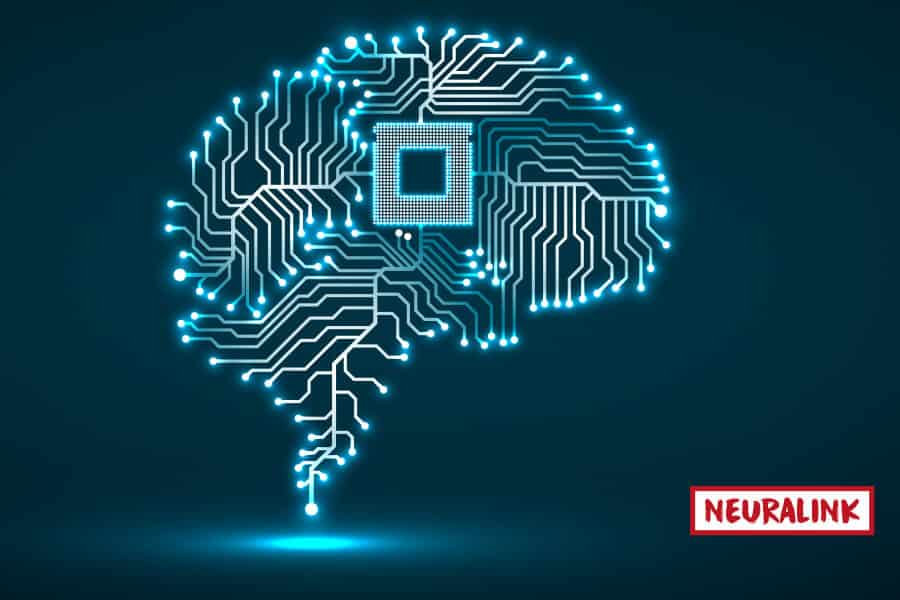The pace of technological development is likely to pose unprecedented challenges to humanity. Neuralink’s brain chips already aim to merge humans with machines. What does Musk’s invention mean to us and should we be worried about the future?
Get to Known Closer the Neuralink
One of Elon Musk’s entrepreneurial “children,” along with SpaceX and Tesla, is Neuralink – a company devoted to brain research. The company works on a “breakthrough technology for the brain.”
Recently, Musk presented a new device: a brain chip that would allow paralyzed people to regain control of their limbs and much more.
The future is here, and science fiction no longer looks like a dream.
Neuralink’s Brain Chip
Based in the San Francisco Bay area, Neuralink was co-founded by Elon Musk in 2016. They aim to implant wireless interfaces in the brain to help cure neurological conditions and disorders. Neuralink’s mission is to aid the treatment of dementia, Alzheimer’s, and various spinal cord injuries.

Eventually, these breakthrough devices are to merge humans with technology. Elon Musk is known for his visionary ideas that revolutionize the world. Starting with online payments and PayPal, he then went on to reinvent cars using electric motors and space exploration with reusable rockets.
The company wants to connect humans and machines. Though it may sound like an idea straight out of science fiction, it couldn’t be more true.
Not so long ago, Musk demonstrated the first tangible effects of their work and presented his brain chip to the world.
Musk’s presentation had some unconventional guests, that being pigs. Neuralink started their research on these animals. They showed a pig without a brain chip, a pig with the implant installed, and a pig who used to have the brain chip before it was removed.
The purpose of the presentation was to demonstrate that the chip doesn’t interfere with any brain functions.
Each animal was a healthy, happy pig. Neuralink’s brain chip didn’t change the animal’s behaviour. Moreover, it can be safely removed, hence making the process reversible.
Throughout the entire presentation, we were able to see the pigs’ brain activity. Every time the animal sniffed something, the graph would show the activity of its receptors.
Neuralink started human trials in 2019. In the end, the brain chips are to allow people to control phones and other devices with their minds. As of today, the company wants to help people with neurological conditions control their paralyzed limbs by rewiring certain neuroconnections.
The brain chip works wirelessly, sending signals to a machine interface. Yet, Musk’s plans are far more ambitious than monitoring pigs’ brain activity.
The Technological Revolution
Serious research on the human brain dates back to the 1970s, when we started monitoring brain activity with technology. This breakthrough took decades to develop. First tiny brain sensors were engineered at the University of Illinois in 2016.
That very same year, scholars at the University of Melbourne developed a concept of a brain chip that doesn’t require brain surgery.
It took four years for this technology to go mainstream.
That’s the usual chain of events – when a breakthrough device is created, it takes a long time for it to enter the market and reach the eye of the public, but then it becomes a ubiquitous part of everyday living.

Such was the case with tempered glass. This extraordinarily durable material was first used by NASA astronauts in their helmets.
Today, almost everybody has this technology in their pockets as the screens of their phones.
The technological revolution slowly but surely changes our lives and incorporates itself into daily living. Will the same process repeat with Neuralink’s brain chip?
Elon Musk predicts that this outcome is inevitable. We’re living in the best times science has ever been through. The rate of new technology development has been rising almost exponentially for the last couple decades.
Neuralink’s aim is to make the brain chip technology available for everybody, everywhere. This tech is still in its cradle, yet with the amount of money and effort put by private corporations into technological development, we’re on the right way to redefine human beings and accelerate the process of evolution.
Cyborgs
As science fiction has it, we seem to be obsessed with android revolutions and lightsabers. Some might point out that the predictions from the previous century turned out to be mostly inaccurate. We don’t have flying cars and we haven’t conquered the galaxy (at least not yet).
However, science fiction is not about predicting the future. As Yuval Noah Harari argues in his book, 21 Lessons for the 21st Century, science fiction often tackles the most pressing issues of our society in a fictional reality. For example, Ex Machina was seemingly a film about artificial intelligence, whilst the subliminal message was clearly about the emancipation of women in modern society.
Likewise, Orwell’s Nineteen Eighty-Four was a cautionary tale about totalitarian invigilation and citizen control, and not about telescreens.
Why is this point so important to make? Technology has progressed so quickly that we shouldn’t look at science fiction as future predictions. In the last few years, we have developed devices never mentioned in science fiction classics.
Hence, we’re faced with new technology-related problems, whose solutions we oughtn’t to seek in science fiction. Science fiction is, counterintuitively, more about the present than the future.
With the advent of biotech and genetic engineering, humans are gradually becoming more connected with technology. Neuralink’s brain chip should be a yellow card to all of us. Technological breakthroughs will pose new moral and legal issues.
Our laws are already lagging behind tech. It took years to introduce legislations for small electric vehicles, and some countries still haven’t solved it legally. Soon, we’ll be able to tinker with the human genome and merge machines with humans. What should we expect?
New Challenges on the Horizon
As these new bio- and infotechnologies emerge, we’ll have to ask ourselves very serious questions, lunatic as they might seem now.
It takes time before cutting-edge technologies are available to the masses. Once we’re able to change the genes of unborn babies, who will actually be able to do that? Only the richest of us will have the liberty to afford to choose the hair color, changing the height, or improving the immune system of their children while still in the womb.
The situation may be similar with Neuralink, innovative as this device undoubtedly is. The people living in extreme poverty might never be able to use their paralyzed limbs ever again. Ironically, these people are possibly the ones who need such technology the most. An African farmer unable to use his arm or leg can lose the main source of their income.
As Harari warns in 21 Lessons for the 21st Century, the Communist idea of eternal class war may take a new turn. In a few decades, we may witness a class struggle between genetically engineered humans and “regular” homo sapiens.
With the help of technology, we’re able to accelerate evolution, making humans more adapted to the changing climate or modern lifestyle. However, it will take time to upgrade the whole of humanity.
The Great Unknown
Of course, none of these grim predictions may turn out to be accurate. We shouldn’t slow down the process of technological development just because we have some concerns. There’s not a shadow of a doubt that people used to be skeptical about the steam engine or the plane.

Nonetheless, we shouldn’t play down the importance of what can go wrong. Only by acknowledging both the potential dangers and merits of new technologies can we responsibly move forward as a species.
Elon Musk is an idealistic dreamer with ambitious plans. Is he the evil genius of our times? It doesn’t seem so, and the entrepreneur makes the impression of being quite aware of the ambiguity of his undertakings.
Neuralink’s brain chips are a revolutionary technology, likely to be a breakthrough in a plethora of scientific branches. We’re all excited to see how it helps people overcome their neurological conditions. Still, we should keep in mind that the future may unfold unprecedented challenges. Want it or not, we will have to face them – and we better be ready.
Photos: Shutterstock / Edited by: Martina Advaney
Interested to know more about where our future heads? Check these articles:
Education for the Future – Which Skills Will Be Essential for 2050?
Support us!
All your donations will be used to pay the magazine’s journalists and to support the ongoing costs of maintaining the site.
Share this post
Interested in co-operating with us?
We are open to co-operation from writers and businesses alike. You can reach us on our email at cooperations@youthtimemag.com/magazine@youthtimemag.com and we will get back to you as quick as we can.









